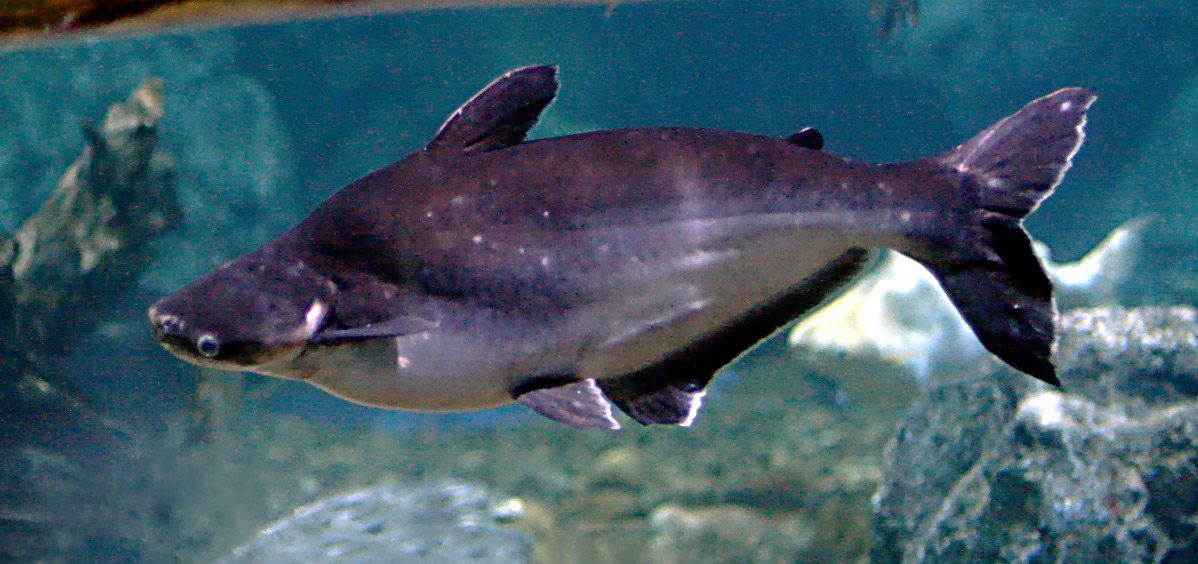- Shark catfish
Taxobox
name = Shark catfishes
fossil_range =Miocene - Recent

image_width = 250px
image_caption = "Pangasius hypophthalmus "
regnum =Animal ia
phylum = Chordata
classis =Actinopterygii
ordo = Siluriformes
familia = Pangasiidae
familia_authority = Bleeker, 1858
subdivision_ranks = Genera
subdivision = "Cetopangasius " †
"Helicophagus "
"Pangasianodon "
"Pangasius "The shark catfishes are a family Pangasiidae of
catfish es found in fresh and brackish waters across southernAsia , fromPakistan toBorneo . Among the 30-odd members of this family is the plant-eating, endangeredMekong giant catfish "Pangasianodon gigas", one of the largest known freshwater fishes.cite book|title=Fishes of the World |last=Nelson|first=Joseph S.|publisher=John Wiley & Sons , Inc|year=2006|isbn=0-471-25031-7]Although Pangasiidae is known to be a natural group, several studies indicate that this group is likely nested within
Schilbeidae . Thus, its familial status may not deserve continued recognition.Two
fossil pangasiid species are described, "Cetopangasius chaetobranchus " and "Pangasius indicus ". However, the reported age of "P. indicus" from theEocene has been doubted. Therefore, the earliest reliable pangasiid fossil age is of "C. chaetobranchus" from theMiocene .cite journal|url=http://silurus.acnatsci.org/ACSI/library/biblios/2007_Ferraris_Catfish_Checklist.pdf|title=Checklist of catfishes, recent and fossil (Osteichthyes: Siluriformes), and catalogue of siluriform primary types|first=Carl J., Jr.|last=Ferraris|journal=Zootaxa |volume=1418|pages=1–628|year=2007|format=PDF ]The
dorsal fin is located far forward, close to the head, and is often high and triangular, thus inspiring the common name. Theanal fin is somewhat lengthy, with 26–46 rays. There are usually two pairs of barbels, maxillary barbels and one pair of chin barbels, though in adult Mekong giant catfish there are only maxillary barbels. The body is compressed. A small adipose fin is present.References
External links
*
Wikimedia Foundation. 2010.
